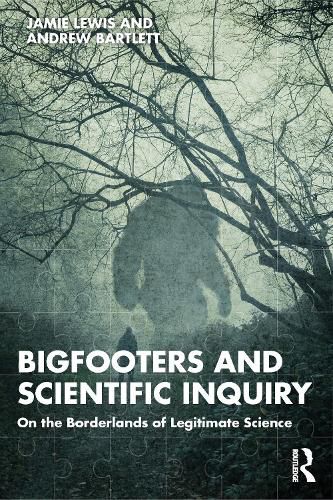Readings Newsletter
Become a Readings Member to make your shopping experience even easier.
Sign in or sign up for free!
You’re not far away from qualifying for FREE standard shipping within Australia
You’ve qualified for FREE standard shipping within Australia
The cart is loading…






Bigfoot exists. Not necessarily as a biological creature, but certainly as an object around which thousands of Americans organise their lives, analysing evidence and making knowledge. This book examines the Bigfooting community sociologically. Using concepts from science and technology studies (STS) as well as cultural sociology, Lewis and Bartlett shed new light on what it is to do 'science', what it is to behave 'scientifically', and where the borders of legitimate scientific practice lie.
Through detailed interviews with Bigfooters themselves, this book explores the ways in which the Bigfooting community makes sense of traces and absences to make knowledge claims that are acceptable to those within that community. It also shows how Bigfooters - in the face of scepticism - attempt to render Bigfoot a proper object of scientific inquiry outside their own circle.
This fascinating, accessible, and entertaining reading will appeal to scholars and students of science and technology studies, cultural sociology, and the sociology of mystery, as well as to those interested in public trust and understanding of science.
$9.00 standard shipping within Australia
FREE standard shipping within Australia for orders over $100.00
Express & International shipping calculated at checkout
Bigfoot exists. Not necessarily as a biological creature, but certainly as an object around which thousands of Americans organise their lives, analysing evidence and making knowledge. This book examines the Bigfooting community sociologically. Using concepts from science and technology studies (STS) as well as cultural sociology, Lewis and Bartlett shed new light on what it is to do 'science', what it is to behave 'scientifically', and where the borders of legitimate scientific practice lie.
Through detailed interviews with Bigfooters themselves, this book explores the ways in which the Bigfooting community makes sense of traces and absences to make knowledge claims that are acceptable to those within that community. It also shows how Bigfooters - in the face of scepticism - attempt to render Bigfoot a proper object of scientific inquiry outside their own circle.
This fascinating, accessible, and entertaining reading will appeal to scholars and students of science and technology studies, cultural sociology, and the sociology of mystery, as well as to those interested in public trust and understanding of science.